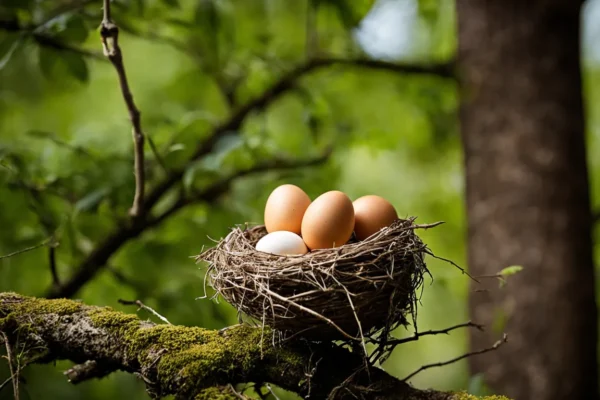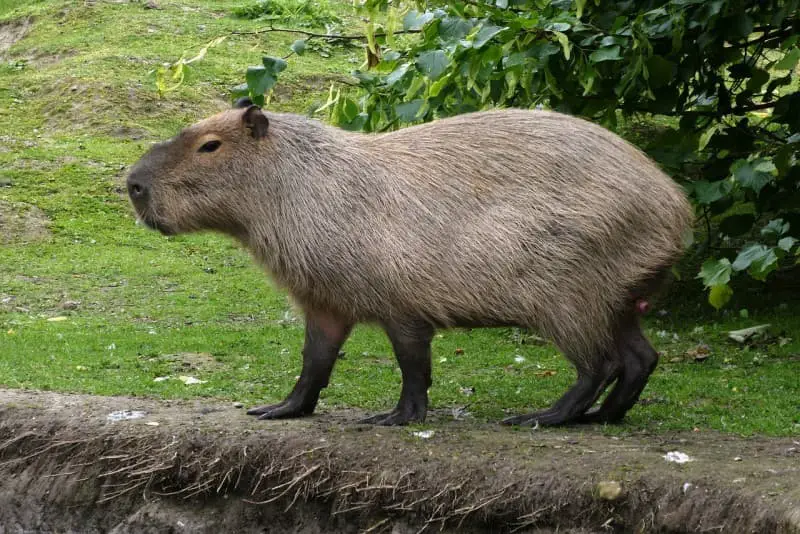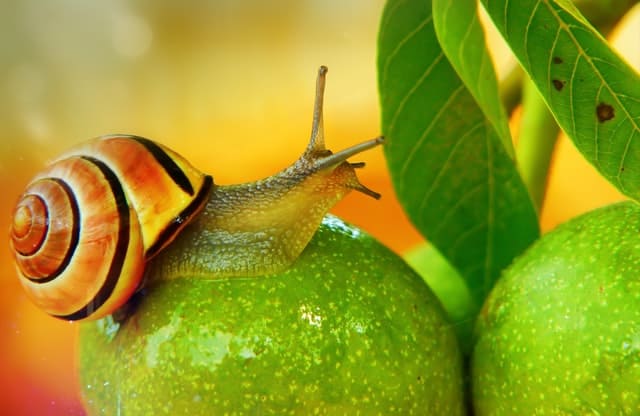Seeing dead young birds may be upsetting and cause one to wonder about the workings of the natural world. Even though losing a life is never acceptable, it’s better to concentrate on proactive methods of bird protection than to interfere with occupied nests.
This essay, which is around 3000 words long, will discuss good actions that everyone may perform to morally assist bird populations and chick survival.
You may help endangered species by supporting conservation organizations and designing bird-friendly yards. By working together, we can establish a habitat that supports bird families.
Recognizing Chick Mortality in Bird Breeding
The intriguing process of bird breeding is essential to preserving healthy populations. There are many phases involved, like as hatching and fledging. Researchers and conservationists can create efficient plans for sustaining bird populations by having a better understanding of these phases.
Birds hatching and fledging
The process via which a bird hatches from its egg is known as hatching. It is a crucial and perilous time in the life of a bird. Different bird species have different incubation times; some eggs hatch in as little as 11 days, while others may take up to several months.
The fledging stage is experienced by the young birds after they hatch. They grow their flying feathers at this time, and they eventually learn to be able to leave the nest. For bird chicks, feathering is an important turning point since it signifies their independence.
Reasons for Young Birds’ Deaths
Sadly, not every bird young makes it through the hatching and fledging phases. Chick mortality may be attributed to a number of circumstances. Predation is among the most important reasons. Birds of prey, snakes, cats, and other creatures may prey on birds, particularly the young and inexperienced ones.
In addition, environmental variables such as inclement weather, starvation, and illness may significantly increase the mortality rate of chicks. During the first several weeks of a chick’s existence, while they are still growing and adjusting to their environment, these difficulties may be very difficult.
Predation’s Function
A vital and natural component of the ecology is predatory behavior. It supports the balance between predator and prey species and aids in population control. Although it is regrettable when predation results in the death of chicks, it is important to realize that predators are essential in maintaining population balance and avoiding overpopulation.
By designing appropriate habitats and putting predator control techniques into practice, conservation efforts often concentrate on reducing the hazards of predation. These tactics seek to retain the natural ecological dynamics while providing protection for fragile bird species.
Conservationists may create focused interventions to assist bird populations by having a thorough grasp of the breeding process and the variables that lead to chick death. These initiatives might include creating nesting locations, safeguarding breeding grounds, and putting precautions in place to lessen the danger of predation.
Visit Audubon or BirdLife International for further information on bird breeding and conservation.
Making Environments Friendly to Birds
Ensuring the survival of bird populations requires the creation of habitats that are conducive to bird migration. We can support the growth and population expansion of birds by creating the ideal environment. When designing habitats for birds, it’s important to take into account a number of important elements, such as the availability of food sources, clean water, appropriate shelter, and places for nesting.
Providing Food Resources
Making sure that birds have access to a plentiful and varied food source is one of the most crucial things you can do to maintain bird populations. Many bird species may be attracted by planting native trees, shrubs, and flowers that provide seeds, berries, and nectar.
You may also enhance the natural diet of birds by placing a variety of seeds and nuts in bird feeders. To stop the spread of illness, feeders need to be cleaned and refilled on a regular basis.
Availability of Pure Water
For birds, having a clean and consistent water supply is essential, particularly in the summer when it’s hot and dry outside. Birds may have a place to drink and wash thanks to birdbaths, ponds, or other little water structures. It’s critical to routinely replenish and clean water sources to stop the growth of germs and mosquitoes.
A secure location for birds to sit and reach the water may also be created by adding rocks or shallow sections to the water feature.
Sites for Nesting and Shelter
To be safe from predators and inclement weather, birds need appropriate housing and somewhere to nest. Planting trees and bushes in thick growth may provide shelter and possibilities for nesting. For birds that nest in cavities, leaving dead trees or snags intact might potentially act as a nesting place.
To increase the effectiveness of their breeding efforts, install birdhouses or nest boxes made specifically for certain kinds of birds. It’s crucial to provide them with the care and attention they need in the right places.
Not only do bird-friendly environments help the birds directly, but they also improve the health of the ecosystem as a whole. Insect control, seed distribution, and pollination are all greatly aided by birds. We may contribute to the upkeep of a healthy and balanced ecosystem by promoting bird populations.
Visit the Cornell Lab of Ornithology or the Audubon Society to learn more about preserving birds and building habitats that are conducive to their needs.
Endorsing bird conservation initiatives
Encouraging conservation initiatives aimed at protecting birds is essential for maintaining bird populations and maintaining the general health of ecosystems. People may support these initiatives in a number of ways, for as by giving money, lending their time and expertise, or taking part in citizen science initiatives.
Projects for Citizen Science
Participating in citizen science initiatives gives bird lovers of all skill levels the chance to supply important data to scientific studies. People may follow migratory patterns, monitor bird populations, and learn more about breeding behavior by taking part in these initiatives.
The Great Backyard Bird Count is a well-known citizen science initiative that invites individuals to monitor and document bird observations in their own backyards. It is held yearly. Another initiative is eBird, an international database of bird sightings that aids in the understanding of bird ranges and population trends by scientists and conservationists.
Cash Contributions
Donations of money are essential to the cause of bird conservation. Donations may be sent to bigger conservation groups with initiatives pertaining to bird conservation, or to organizations that specialize in bird conservation.
Donations enable people to support habitat restoration initiatives, research and monitoring activities, and educational initiatives that increase public understanding of the value of bird conservation.
It’s critical to investigate and choose respectable organizations with a solid track record of accomplishment in their conservation efforts.
Giving back
Another excellent method to help with bird conservation efforts is to volunteer. Numerous organizations depend on volunteers to assist with a range of responsibilities, including habitat restoration, public awareness programs, and field research.
People may actively give their time and talents to directly improve bird populations by volunteering. Additionally, volunteering offers the chance to meet like-minded people, gain more knowledge about birds and their habitats, and directly contribute to conservation efforts.
Final Thoughts
Even though humans have little influence over the natural cycle of life, we can have a beneficial effect on bird numbers by promoting conservation and building safe habitats. Even little things we do as a group enable endangered creatures to procreate and survive.






2 thoughts on “Conservation Of Eggs And Chicks to Support Bird Population”